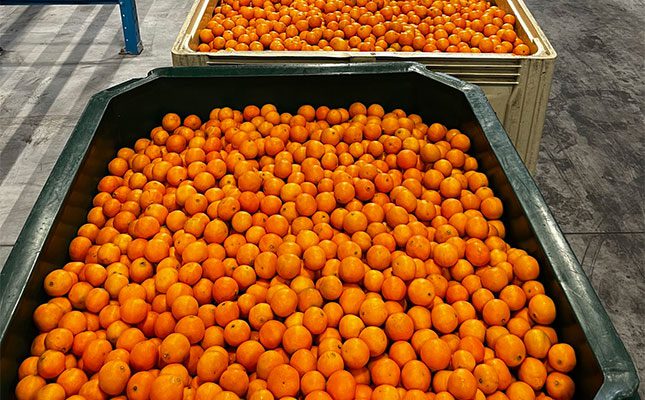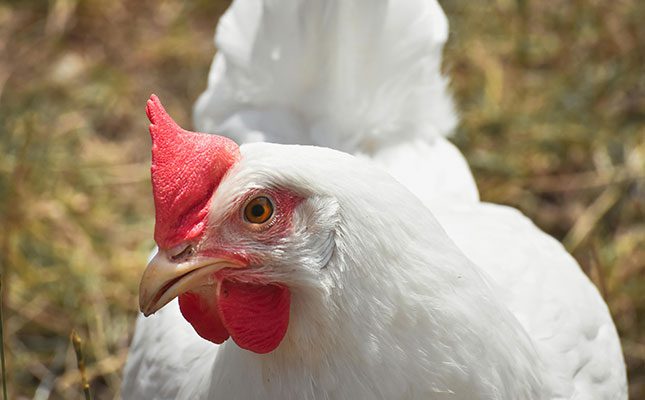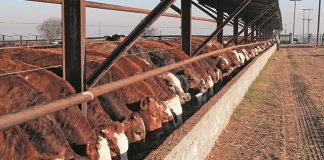
Photo: Facebook | Citrus growers' association of Southern Africa
This marks a 22% increase on 2024 and a significant jump from the industry’s initial April estimate of 171,2 million cartons.
South Africa is the second-largest citrus exporter in the world, and two-thirds of local citrus production is exported as fresh fruit. According to the Department of Agriculture, this generates 95% of total annual citrus earnings and contributes to substantial employment growth.
Statistics from the Citrus Growers’ Association of Southern Africa (CGA) show that the final packed volumes for 2025 comprise 15,3 million cartons of grapefruit (up 7% from 2024); 53,5 million cartons of mandarins (up 28%); 41,3 million cartons of lemons (up 19%); 31,5 million cartons of navel oranges (up 25%); and 61,8 million cartons of Valencia oranges (up 26.9%).
Speaking to Farmer’s Weekly, CGA CEO Boitshoko Ntshabele said the production increase was driven by good weather, young trees entering production, and some unexpected factors, which included “exceptional demand in overseas markets for processing-grade juicing oranges and lemons, an early end to the Northern Hemisphere supply, and improved logistics efficiency, especially port efficiency”.
“Investments in new equipment and the introduction of employee incentives linked to productivity resulted in a productive logistics ecosystem,” he added.
Ntshabele said improved water use and pest management, as well as increased hectares under protective nets, contributed to “exceptional packouts and fruit quality”.
Driving growth amid challenges
He added that while the 2025 harvest is slightly ahead of long-term projections, it should be seen in the context of the CGA’s Vision 260 strategy.
“This strategy focuses on key deliverables across the entire supply and value chain that will enable the production and profitable exporting of 260 million cartons by 2032,” he said.
He added that the plan is expected to create 100 000 jobs and generate significant foreign earnings. However, he cautioned that growth does not come without pressure.
“Volume is just one measure by which to assess an industry. Our growers continue to face challenges, including unpredictable price and market dynamics, rising input costs, and market access issues such as high tariffs and unscientific plant health measures,” he explained.
One major challenge anticipated this year was the 30% tariff imposed by the US on South African citrus; however, the impact was limited, Ntshabele said in a statement.
“The tariffs came into effect towards the end of the season. Growers in the Western and Northern Cape were able to increase and fast-track shipments before the tariff deadline.”
He also welcomed the new exemption of tariffs on oranges for 2026: “The exemption once again makes South African oranges competitive in the US market.”
He urged the US to extend the exemption to mandarins: “Our mandarins are popular in the US. The US should consider extending the current exemption to include mandarins and other citrus varieties because they share similar market dynamics and supply chain vulnerabilities.”
Minister of Agriculture John Steenhuisen applauded the industry’s achievement this season.
“This achievement is a testament to the resilience and strategic foresight of our citrus growers, workers, and industry leadership. Hitting over 203 million cartons for the export market is a powerful indicator of the industry’s vital role in our economy, its capacity to create jobs, and its contribution to our country’s foreign earnings,” he said in a statement.
He said the industry remains the largest exporter in the agriculture sector by value: “It continues to reinforce the role of the fruit industry, which remains the cornerstone of the agriculture sector in the country and a national economy stabiliser in times of a national economic crisis.”
Steenhuisen added that his department would continue working with the industry to navigate logistical challenges and grow, retain, and optimise market access.
Commenting on the exports, Agbiz chief economist Wandile Sihlobo said South Africa’s agricultural exports have been “superb” in 2025, boosted by improved port operations.
“The large volumes of production for various products, combined with improvements at the ports, have led to encouraging export activity. While there remains a need for further improvement in port efficiency, significant progress has been made compared with recent years.
“Agricultural export activity in the second quarter experienced less friction than it had in the recent past,” he explained.










